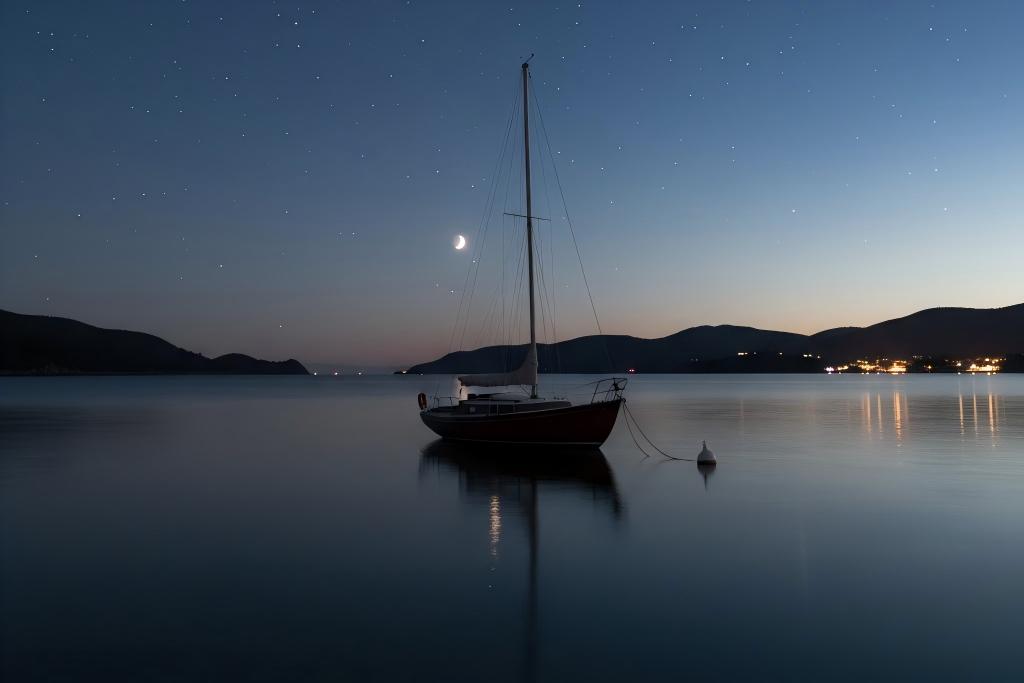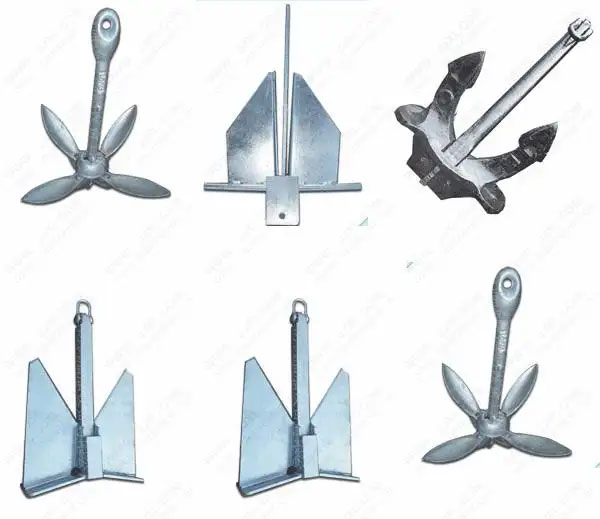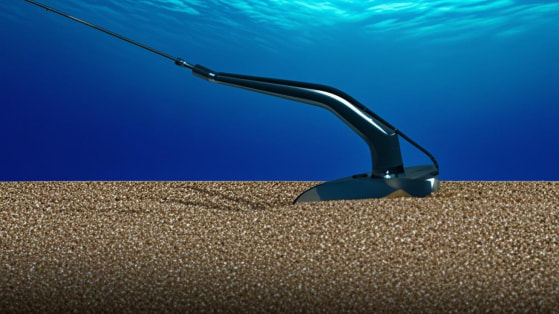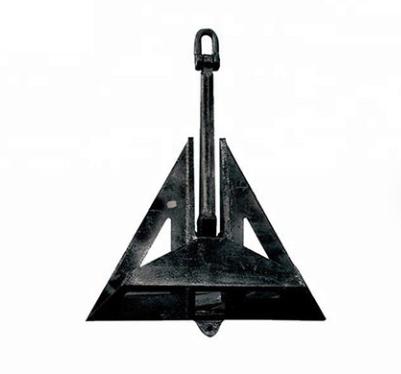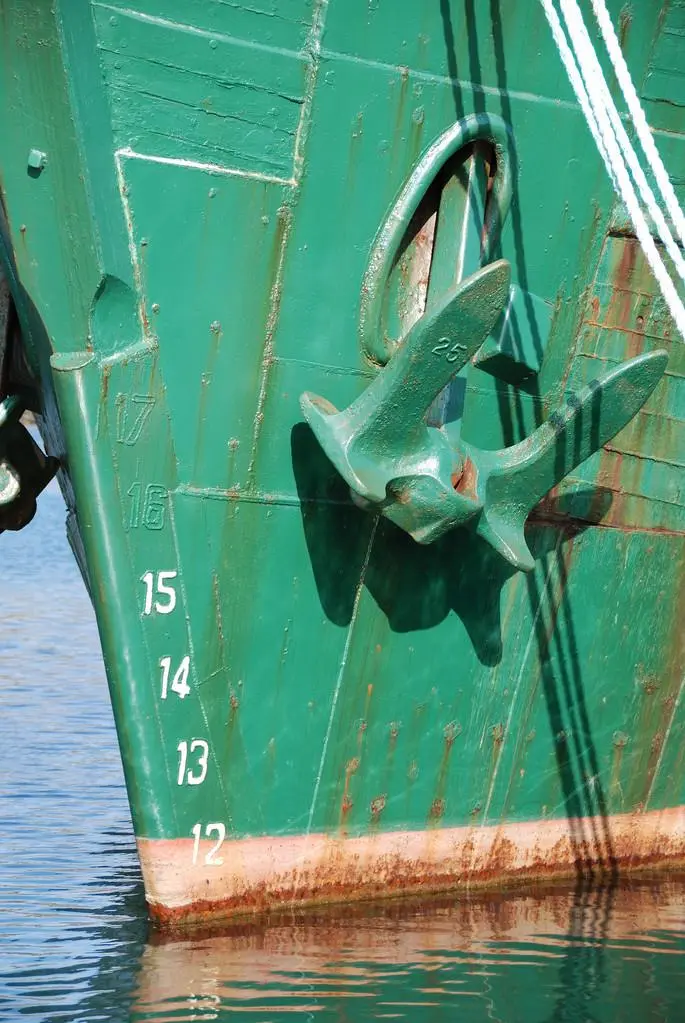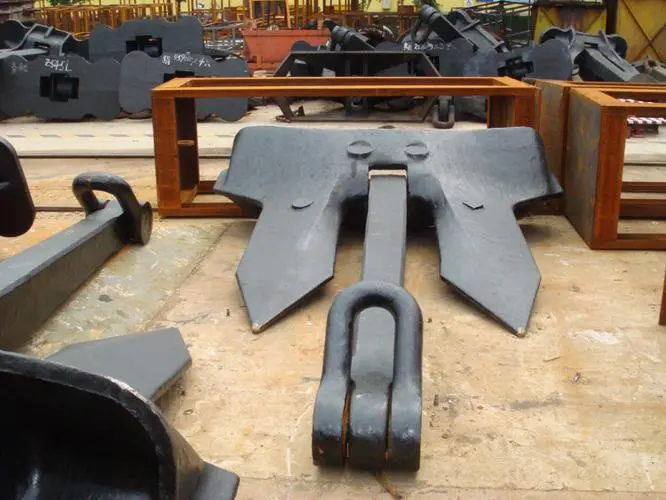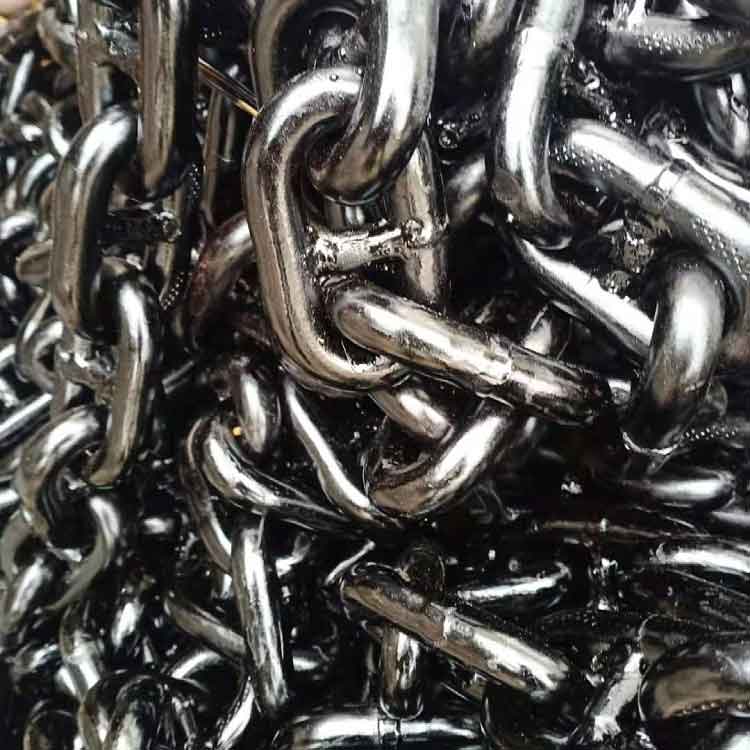Marine anchor is a device used when a ship is mooring. Its function is mainly to rely on the gravity of the anchor and chain to insert into the seabed, achieve the purpose of fixing and stabilizing the ship in shallow seas and harbors. Marine anchor is a piece of indispensable equipment to ensure the safety of ships, and is called “the patron saint of seafarers“. How to correctly install and use the anchor is particularly important. This article will focus on the installation and use of anchors.
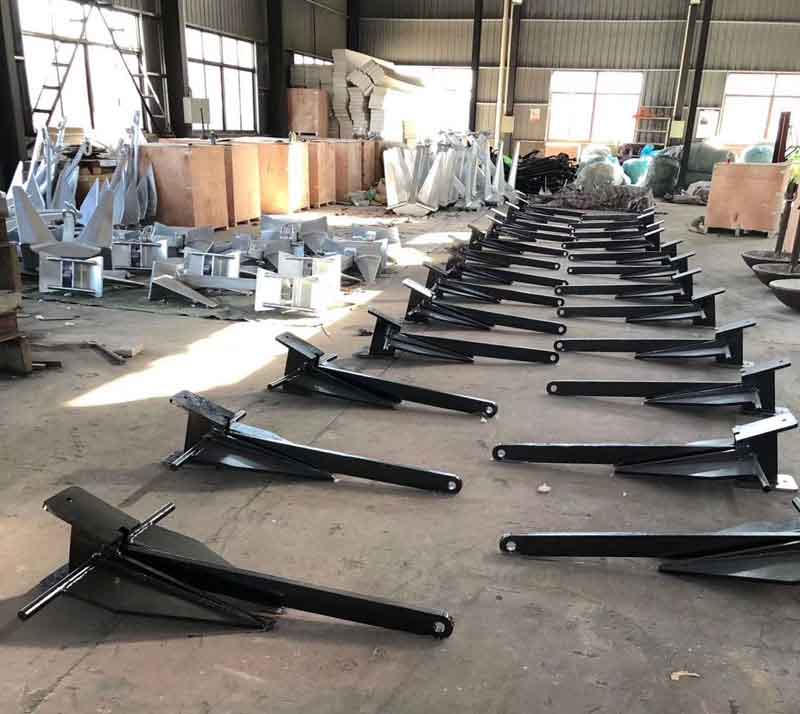
Installation requirements and inspection methods of marine anchor
Before installing the marine anchor, chain, swivel, and connecting ring, carefully copy the product number of the ship inspection, the product number of the manufacturer, and the quality of the anchor. After inspection, it can be shipped only when the specifications and quantity meet the requirements of the drawings, and each serial number shall be recorded.
The visual inspection of the anchor should be carried out before painting. The surface of the anchor and its parts should not have cracks, pores, sand holes and other defects that can affect the strength. Surface defects that do not affect the strength are allowed to be repaired by welding.
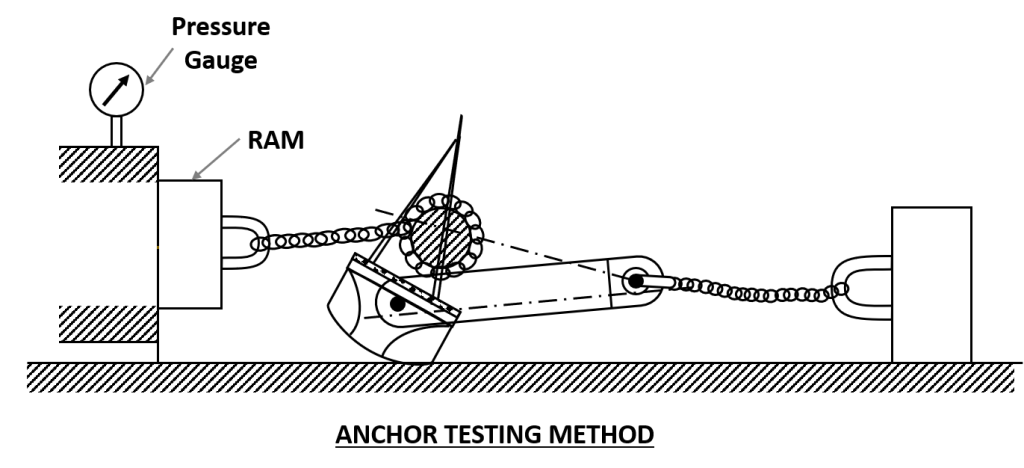
The error limit of the outer dimensions of the anchor is 3%, but the total actual mass of each bow anchor shall not be less than the sum of the anchor weight specified in the specification; the mass error limit of each new bow anchor when equipped is 7%; the bending of the anchor rod is The length of 1m should not exceed 3mm; the allowable deviation of the anchor claw rotation angle is -0.5°~+2°; when the quality deviation of the anchor is met, the allowable deviation of the dimensions of each part is 4%, but the maximum value must not exceed 20mm.
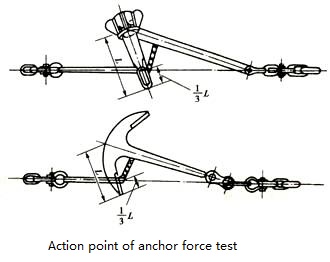
The test of the anchor refers to the tensile test of the anchor. According to the national standard G8/T548-1996, anchors with a mass greater than 75kg should be subjected to a tensile test. One end of the pulling force is at the anchor shackle, and the other end is 1/3 away from the tip of the anchor claw on the anchor claw. A mark is made on the anchor rod at the anchor shackle and at each tip of the anchor claw to measure the distance. For rodless anchors, pull both claws at the same time, first pull the claws on one side, and then turn the claws to the other side for the pull test. The method of applying force is to gradually increase the force to 10% of the test load, hold for 5 minutes, and measure the distance between the two marks; then gradually increase the tensile force to the test load, hold for 5 minutes, and then reduce to 10% of the test load, and measure the distance between the two marks. If the distance between the two pull tests does not exceed 20mm, and the anchor claw can be flexibly turned to the maximum angle on both sides, it is qualified. Otherwise, the pull test should be done after the defect is eliminated. If it still does not meet the requirements, it cannot be accepted.
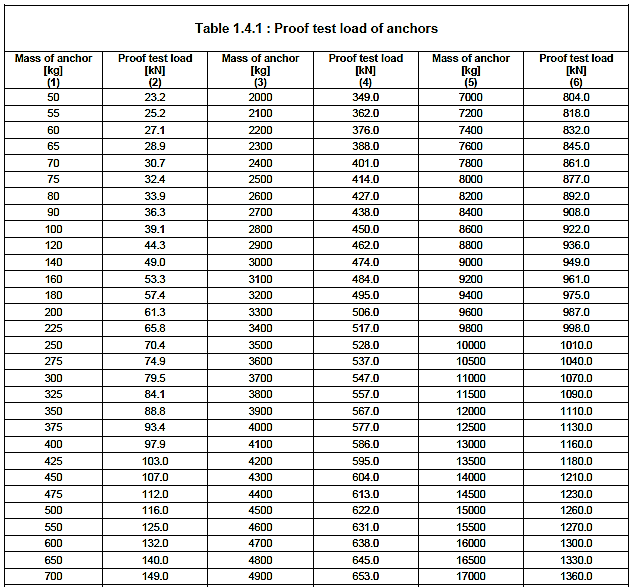
Use of marine anchors
Anchors for ships can be basically divided into anchors for mooring, anchors for auxiliary ship maneuvering, and anchors for emergency use.
1. Anchor for moring
Ships need to anchor at anchorages in order to wait for loading and unloading of cargo, shelter from wind, and wait for berths, tides, quarantine. Mooring anchors require anchors to be held firmly. After the proper length of the anchor chain is loosened, the holding force generated by the anchor and the anchor chain can resist the force of the water, wind and waves on the ship. According to the natural conditions of the berthing site, it can be divided into two types of mooring: single mooring and double mooring.
2. Anchor used to assist ship maneuvering
When navigating in narrow waterways, anchors are sometimes used to help turn around or turn, to tow anchors to control the heading, to control the hull, or to brake the speed of the ship when berthing or leaving a berth or emergency avoidance. Anchor for manipulation generally does not have a long chain, which mainly acts as a block and does not require the anchor to be fully grasped.
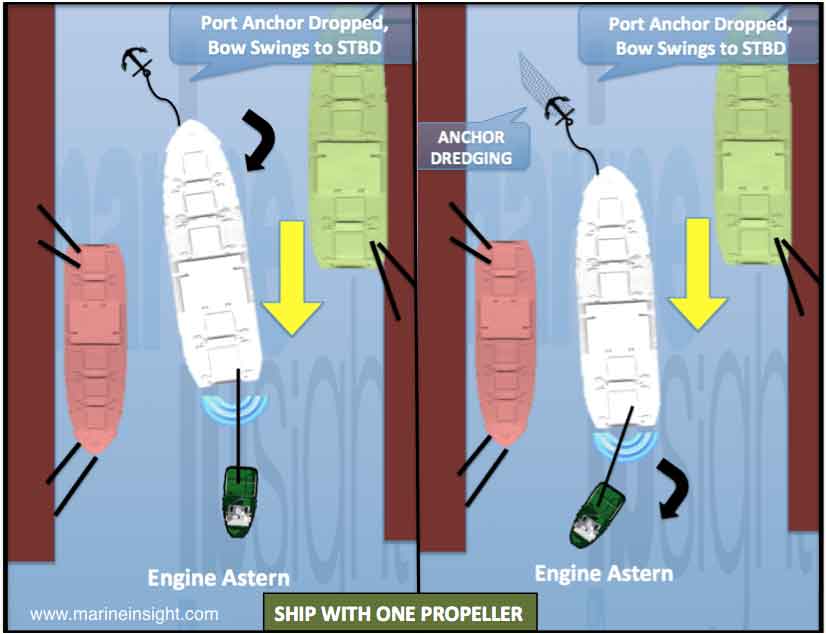
3. Anchor for emergency
When navigating in waters with high navigable density such as narrow waterways, sometimes it is an emergency to avoid, and the (double) anchor brake can be towed to reduce the speed of the ship to avoid collision or reduce collision loss. If the ship ran aground, the anchor can be dropped in the direction of descent, and the anchor chain can be twisted to assist in the descent. When the ship encounters heavy wind and waves and the headwind is stagnant, the anchor and the appropriate length of the chain can be used to increase the drift resistance of the ship and help control the heading, so as to assist the ship in resisting the strong wind and waves.
Ship anchoring methods
Ship anchoring is a common method of berthing. The process is rough as follows: The anchor connected by the anchor chain or the anchor rope on the ship is thrown into the water to land and bites into the soil. The holding force generated by the anchor is consolidated with the water bottom, and the ship is firmly anchored in a predetermined position. According to different waters, meteorological conditions and operational requirements, the anchor casting methods are as follows:
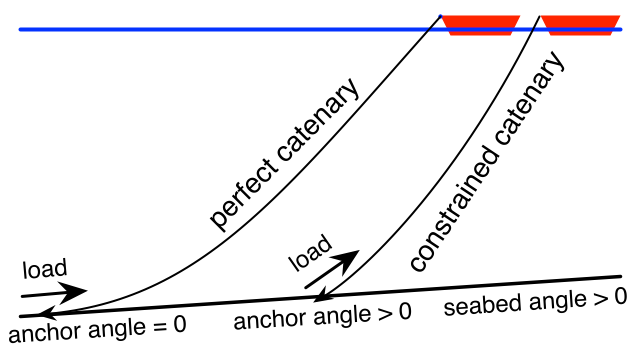
1. Anchoring from the bow of the ship
There are two types of ship’s bow anchored: single anchor and double anchor. Under normal circumstances, a single anchor can be used to fasten the ship, and only double anchors can be thrown when the wind and waves are particularly strong and the anchorage is narrow. When anchoring from the bow of the ship, the hull receives the least external forces such as wind force, current force and wave impact force, so this method is the main method of anchoring and mooring, and it is also the main reason why the main anchor is arranged in the bow of the ship. Generally, there is only one bow anchor on small boats and fishing boats. In addition, any ship is equipped with two main bow anchors at the bow. When the ship reaches a certain length, a spare main anchor, also known as wind-resistant anchor, should also be provided on the ship.
2. Anchoring from the stern of the ship
Anchoring from the stern is mostly used for inland watercraft and landing craft. When the inland river vessel sails downstream and anchors downstream, in order to ensure safety and avoid turning around, the stern anchor is often used. In the operation of landing ships and retreating from the beach, with the cooperation of the main engine, the ship on the beach was pulled down the beach by the pulling force of the windlass.
3. Anchoring from the ship side
When the ship is in a berthing condition where the water flow or wind direction is perpendicular to the centerline or at a certain angle, anchoring from the ship side can facilitate ventilation and disinfection or enable the ship to load and unload cargo on the leeward side, or perform other operations.
4. Anchoring from the bow and stern
If you want to make the anchored ship always use the ship’s side and face the wind direction, then use the method of anchoring bow and stern. This method is generally to throw the main anchor from the direction of the wind, from the stern, pass a cable around the outboard of the ship and connect it with the thrown-out main anchor chain, and then release some main anchor chains. Another method Yes, after the main anchor at the head is thrown, the tail anchor is thrown from the tail. The stern anchor is usually transported and dropped by a small boat. The stern anchor is generally smaller than the main anchor, about 1/3 of the main anchor.
Note points when using marine anchors
The main function of the anchor is to fix and stabilize the ship. Pay attention to the following aspects:
- For anchors to work, the most basic condition is to hook things on the bottom of the sea. If the anchor chain is not long enough, the anchor will not work. If the seabed is flat, or the thing the anchor is hooked on is not fixed, or the hook is not very strong, if it is calm and the sea is still okay, once the waves are too large, the anchor can’t catch things and the anchor will lose its function. This is called anchoring. It is very dangerous when the ship is anchored, because the main engine usually stops when the ship is anchored. If the ship is started immediately, it takes time, and it is very dangerous for a ship without power to drift around. . Therefore, the concept of anchorages came into being. Anchorages meant that the bottom of the sea was relatively rough. In addition, they had to be sheltered from the wind.
- Anchor chain is the part that guarantees that the ship can stand still on the water surface. If the ship wants to stand still in the current, it must rely on the anchor in the water to hold ship. Weight, so there are rules for how big a ship is and how big an anchor is. This is due to the holding force that the anchor can produce and its own inertial force, and the friction force of the anchor chain also plays a certain role.
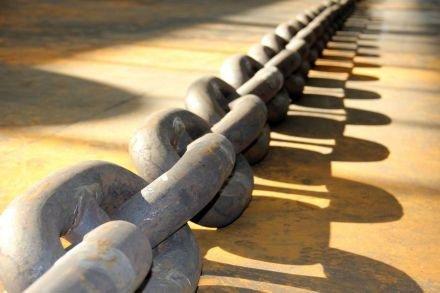
- Looking from the top of the ship, the anchor chain is straight, but there is a section of it under water that is close to the seabed (in fact, it is close to the seabed). The anchor provides the holding force, which is then transmitted to the ship through the anchor chain, thereby resisting the influence of the external load of the sea current and wind and waves on the positioning. The reason why there is a section close to the bottom of the sea is to take into account the influence of the force. Think about it, an anchor, the anchor chain is easy to move when pulled straight; and there is a section close to the bottom of the sea, which can provide a margin, which is possible within a certain range.

